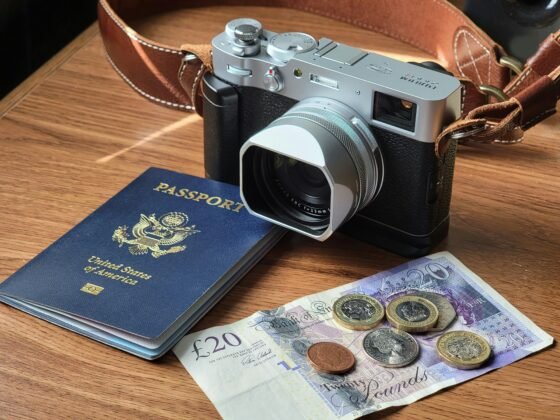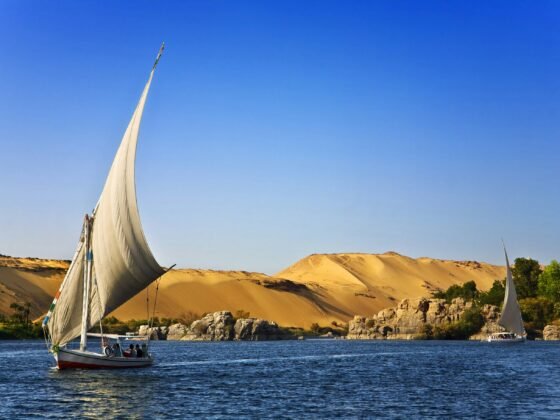The Silk Road Tours - Trekking Holidays and Adventure Guide
The Silk Road, named by Ferdinand von Richthofen in 1877, is not one road but an ancient network of trade routes that joined China and Europe as early as 138 B.C. The western end of the trade routes developed earlier as western empires started trading with India. The Greek language and mythology as well as sculpture were blended with the culture in the Indian kingdoms. They passed through the Iranian empire of Persia that controlled most of the Middle East and cultural and religious influences began.
The eastern end took longer to form because of the warring tribes in China. In 125 B.C. Zhang Qian, considered the father of the Silk Route, became interested in the larger horses from the west and opened the trade routes. After Greece, Rome became fascinated with the small quantities of silk that were brought to the west and began their own trade missions to find the source and not have to pay the high prices of the Parthian middlemen.
-----------------------------------------------------------
Silk Road China
The Great Wall of China was built to defend against the northern states invading the southern states. When the Silk Road was regularly traveled by traders carrying precious stones, gold, ivory and glass bandits started attacking. To protect their interests the Great Wall was continued along the Gansu Corridor. Sections of this Han dynasty wall can still be seen as far as Yumen Guan which is much beyond the established beginning of the Great Wall.
In the province of Gansu there are 1700m of ancient Buddhist grottos that stretch from the western tip to the eastern edge of the province. These and other treasures including beacon towers, tombs and military garrisons were left behind by the traders on the silkroad. There are innumerable Buddhist paintings and sculptures that give a glimpse of the dynamic Tibetan culture as Buddhism spread along the Silk Road from India to China. The Mogao Caves show the origins of Chinese Buddhist art, and there are Silk Road remains near Tianshui and Luomen which travelers can see on silk route tours.
The Gansu Province has another destination for followers of the Silk Roads. In Jiuquan there is a Silk Route Museum that was built over the tomb of the Xiliang King. It exhibits over 35,000 antiquities from the Silk Road including the Jade Road collection and the largest underground art gallery in the world located in the Wei Jin tombs. Just as the Silk Road shared culture, religion and wealth, the museum is dedicated to understanding between East and West. It has been a fascinating travel destination for tours silk road since 1972 where people come to see history, science and technology, religious belief, daily customs, arts, economy, politics and husbandry production from thousands of years ago.
-----------------------------------------------------------
Uzbekistan
Samarkand in Uzbekistan held the central position on the Silk Roads between Rome and China. Also on the UNESCO World Heritage List as the crossroads of cultures, it is a city worth visiting. After being sacked by Genghis Khan in 1220 and again by Khan Baraq to get its many treasures, it never recovered to its former glory. There are today many beautiful examples of Islamic architecture as well as Afrasiyab, a historical site from the 13th to the 7th centuries B.C.
-----------------------------------------------------------
Turkmenistan
Merv was the largest oasis in Central Asia on the Silk Road. Located in Turkmenistan near the city of Mary, it was once a center of cultural and political interchange. During the 12th century it was the largest city in the world. It has been put on the UNESCO World Heritage Site list and should be on your silk route tours list too.
Remarkable archaeological discoveries have been made by a team from Turkmenistan and the UK between 1992 and 2000 in Merv and it is an interesting site to visit on silkroad tours. There are four walled cities that were built during the time of Merv’s importance preserved in the Ancient Merv Archaeological Park. It is possible to see each development of the city from antiquity to the Middle Ages.
-----------------------------------------------------------
Iran
Ecbatana or Hamadan today was another resting place along the Silk Road. Marco Polo reported seeing the tombs of the three magi who visited the baby Jesus. Whether they are entombed there or not, it is believed that they must have traveled the Silk Road and rested in Ecbatana. It is situated in Iran and considered to be one of the oldest cities in the world dating back to 3000 B.C. Even in recent times it was a center for commerce and trade because of its location on the Silk Route as Chinese traders traveled west. It is mentioned in the Old Testament book of Ezra and visitors can see ancient artifacts, the tomb of Esther and Mordechai and Islamic architecture. The inscriptions carved in granite by Darius and his son Xerxes are just five kilometers southwest.
-----------------------------------------------------------
Turkey
Istanbul or Constantinople, as it was called during the time of the silkroad, is a city full of art, artifacts and history dating back to the early Romans. Situated at the gateway of Europe the wealth of the Silk Road flowed into Constantinople for centuries. It was the richest and largest city in the Eastern Mediterranean and dominated the economic life of the Mediterranean countries during the Middle Ages. The home of spectacular ancient monuments and palaces as well as churches, mosques and monasteries it also has a vibrant night life and is a city that reaches from deep in antiquity to the future and should be included on your tours silk road.
-----------------------------------------------------------
Italy
Italy and France were major destinations for much of the road silk, gemstones and spices that traveled west along the Silk Road, but Venice has a special place. Not only because it is the starting place for Marco Polo, who’s memoirs are so interesting and useful, but because it was a major trading city with the Byzantine Empire and the Islamic world. Venice grew rich because of the Silk Road and is a premier travel destination because it is a city full of great art and architecture. Centuries ago it flourished through the wealth of many civilizations from the Silk Road and today its economy depends on tourism, another form of the merging of different cultures.










